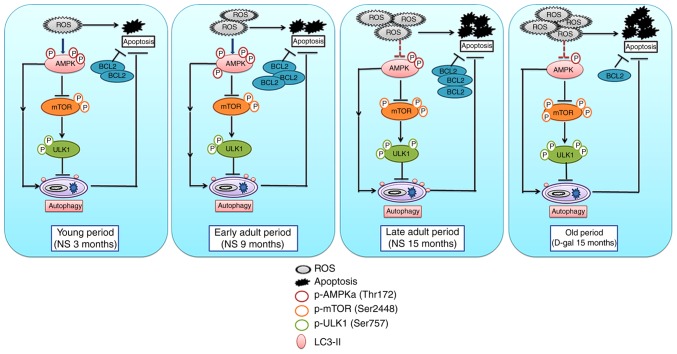Figure 10.
Schematic of the interrelationships among p-AMPK, p-mTOR, p-ULK1, autophagy and apoptosis. Accumulated ROS results in the phosphorylation and activation of AMPK. Activated AMPK suppresses mTOR, thereby activating autophagy and exerting an anti-apoptotic function. Additionally, AMPK may directly activate autophagy through other mechanisms. However, excessive ROS and metabolites lead to impairment of AMPK activity, and increased activity of mTOR phosphorylates ULK1 at Ser 757, leading to the suppression of autophagy initiation. Autophagy and BCL2 cooperate against apoptosis and delay the process of senescence. AMPK, 5′ AMP-activated protein kinase; mTOR, mechanistic target of rapamycin; p, phosphorylated; ROS, reactive oxygen species; BCL2, B-cell lymphoma 2; NS, normal saline; D-gal, D-galactose.

